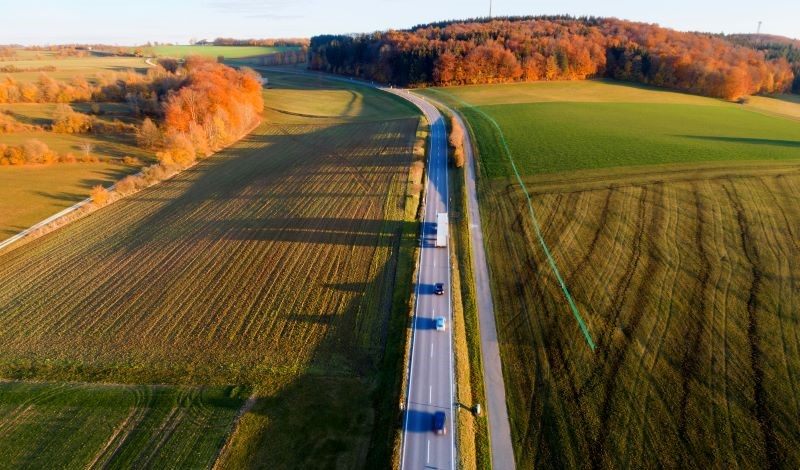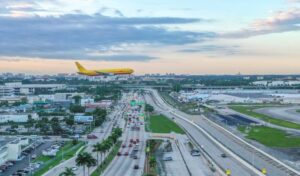
Regulators must redress transportation inequities in rural and disadvantaged communities.
Popular perceptions of the rural United States evoke images of farms and ranches, wide open spaces, and, of course, pickup trucks and cars to drive around it all. Without vehicles, it would be hard to traverse rural terrain. By definition, rural areas are sparsely populated and require great distances to travel between home and important destinations.
Even though it is true that almost everyone in rural areas has a car to get around, 4 percent of those who live in rural parts of the United States do not. Another 19 percent of rural residents find themselves in a “car-deficit,” meaning they have fewer cars available than household drivers. That adds up to nearly 9 million rural residents who may not have a car available when they need one. Many of these households are in the most impoverished places in the country, too: Appalachia, the Deep South, and some Native American reservations in the western United States.
Rural residents who do not have sufficient access to a car often face other structural disadvantages associated with lower socioeconomic status, which all together compound inequities. They are more likely to have lower incomes and lower educational attainment. They are also more likely to be people of color.
The lack of access to a car contributes to fewer job opportunities, poorer health, lower quality health care, greater social isolation, and lower levels of overall well-being. Carless rural residents are twice as likely as carless urban residents to stay at home on any given day because they do not have a car available to them.
How do people in rural areas cope without having car? Asking for rides from friends and family, borrowing cars, and coordinating carpools for commutes are all common coping mechanisms, according to interviews with residents in California’s Central Valley. These options are often lifesavers, particularly for those who need to get to medical appointments. But these options also come with additional stresses, such as having to negotiate a ride or having to pay for the unbudgeted cost of gas. And although basic transit services operate in and around populated town centers in some rural areas, buses generally come infrequently, making it challenging to rely on public transit.
Cheaper transportation costs and community-based car sharing and carpooling, however, could yield the biggest benefits for day-to-day mobility. But these initiatives are challenging to implement in some places.
For instance, California’s plans to meet its sustainability goals by expanding the use of electric vehicles will present a significant challenge for ensuring mobility justice in rural areas. All new vehicles sold in California must be zero-emission by 2035, the vast majority of which are expected to be battery-powered electric vehicles (EVs). California’s aggressive greenhouse gas reduction targets—85 percent below 1990 levels by 2045—will yield massive changes to the transportation sector.
Both California and the federal government offer tax credits for electric vehicle purchases. But even after the financial incentives, EVs remain out of reach for many low-income residents in rural communities. And other barriers to clean transportation adoption persist, such as the safety and inconvenience of walking, cycling, and using public transit. Rural communities must also contend with limited availability of charging infrastructure. Reduced awareness of clean vehicle options also frustrate efforts to encourage adoption of EVs in rural areas.
Despite these barriers, community groups in California are seeking to tackle climate change challenges while ensuring a just transition to a decarbonized transportation sector. And the California Air Resources Board, which regulates air quality, has grant programs that provide funding to disadvantaged communities to implement clean mobility pilot projects, conduct needs assessments, and build capacity to develop EV-related projects.
One such project, Miocar, manages an all-electric car share in San Joaquin Valley through a partnership between a nonprofit organization and the metropolitan planning organization. The service provides critical mobility options for low-income housing residents and other low-income groups in this predominately rural area.
Financial support for these programs, however, is not a guarantee. So long as project evaluations demonstrate that community-oriented transportation projects promote equity and mobility, legislators should continue to appropriate funding for these projects.
Community-oriented transportation programs benefit from legislation that funnels investment into environmental justice. For example, California’s cap-and-trade program for climate investments requires directing one quarter of the program’s proceeds to communities with high social vulnerability and pollution burden, such as Tribal communities. And the new federal Justice40 initiative allocates 40 percent of investments from certain funding programs to overburdened communities to address issues of transportation, health, environmental and economic resilience, and historic inequities.
Under these government grants, the metrics defining disadvantaged communities incorporate specific indicators that identify vulnerable rural areas. Other programs and organizations often do not consider these indicators due to limitations in both collected data and analytical tools.
A transportation system rooted in mobility justice requires intentional action to repair past harms. It calls for sustained engagement with communities to ensure that planning and investments meet their needs. Programs and initiatives that work in urban areas may not be appropriate for rural places. As the country continues to invest in and implement a more sustainable transportation system, leaders must do so in a way that attends to rural communities’ distinct needs.
This essay is part of a four-part series entitled, Mobility Justice.




